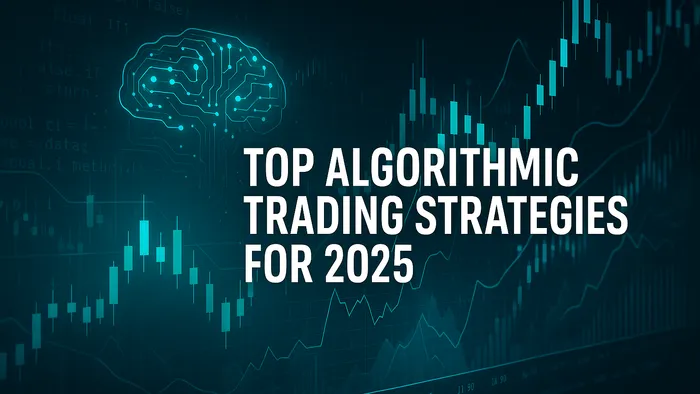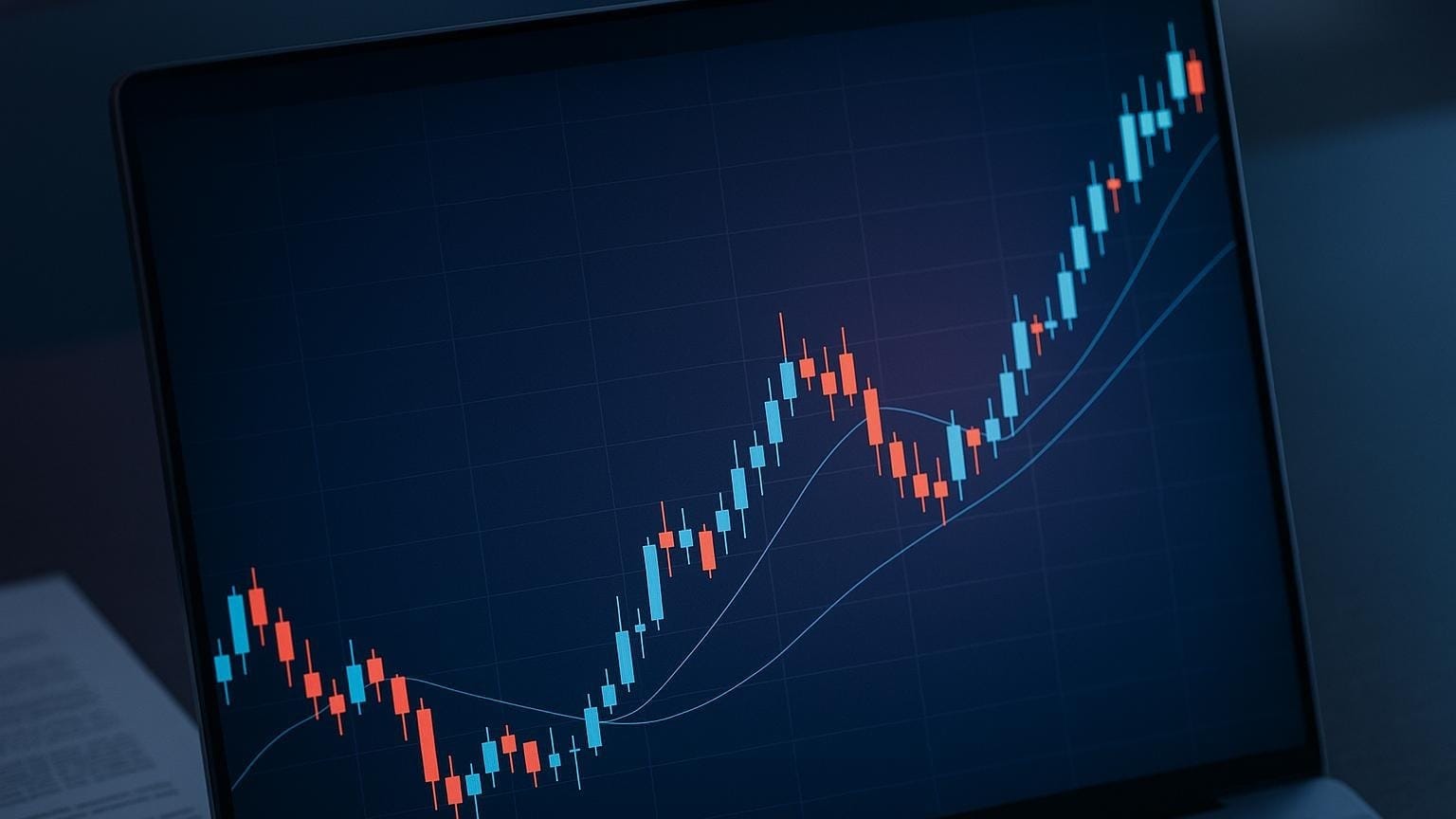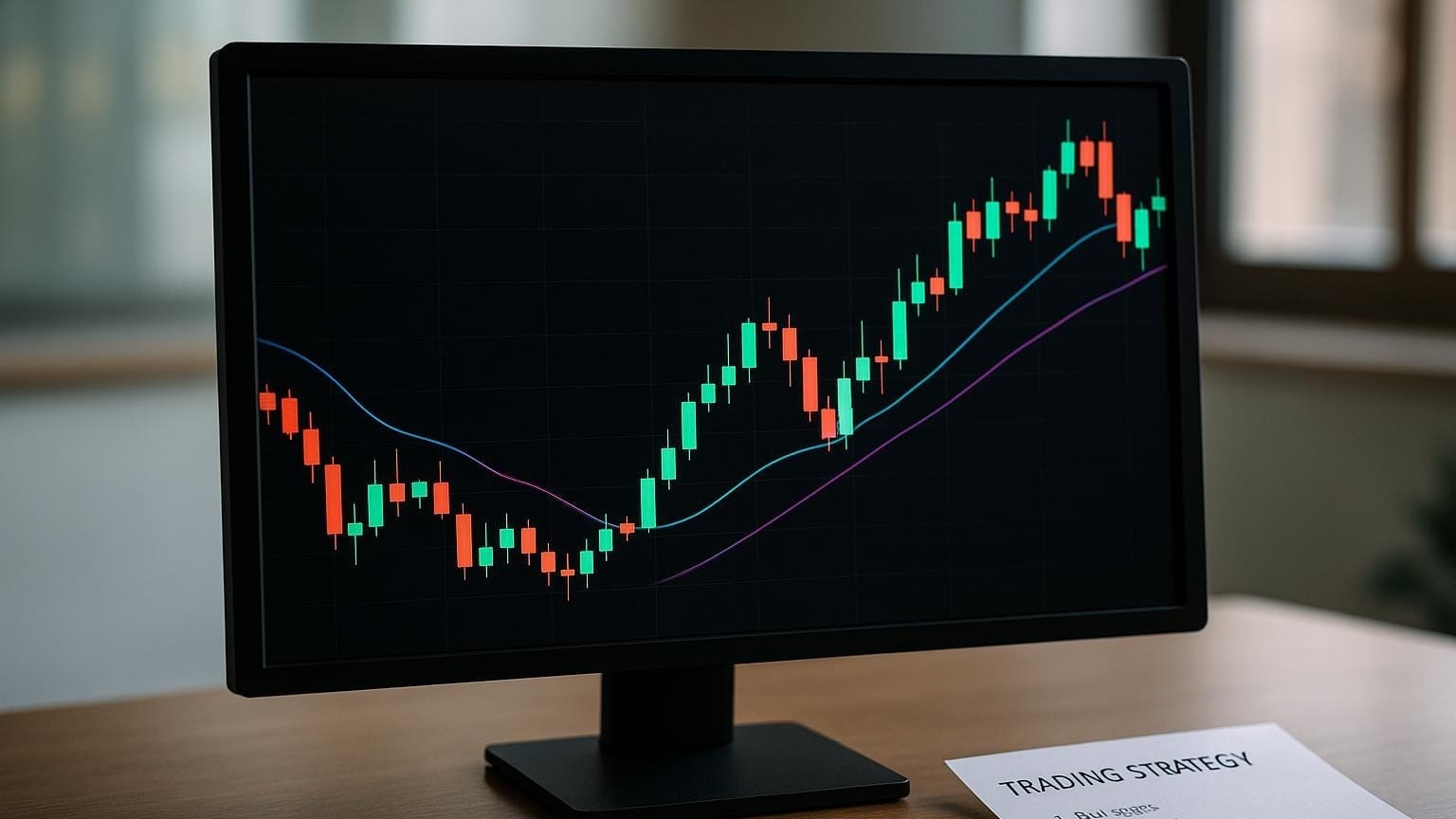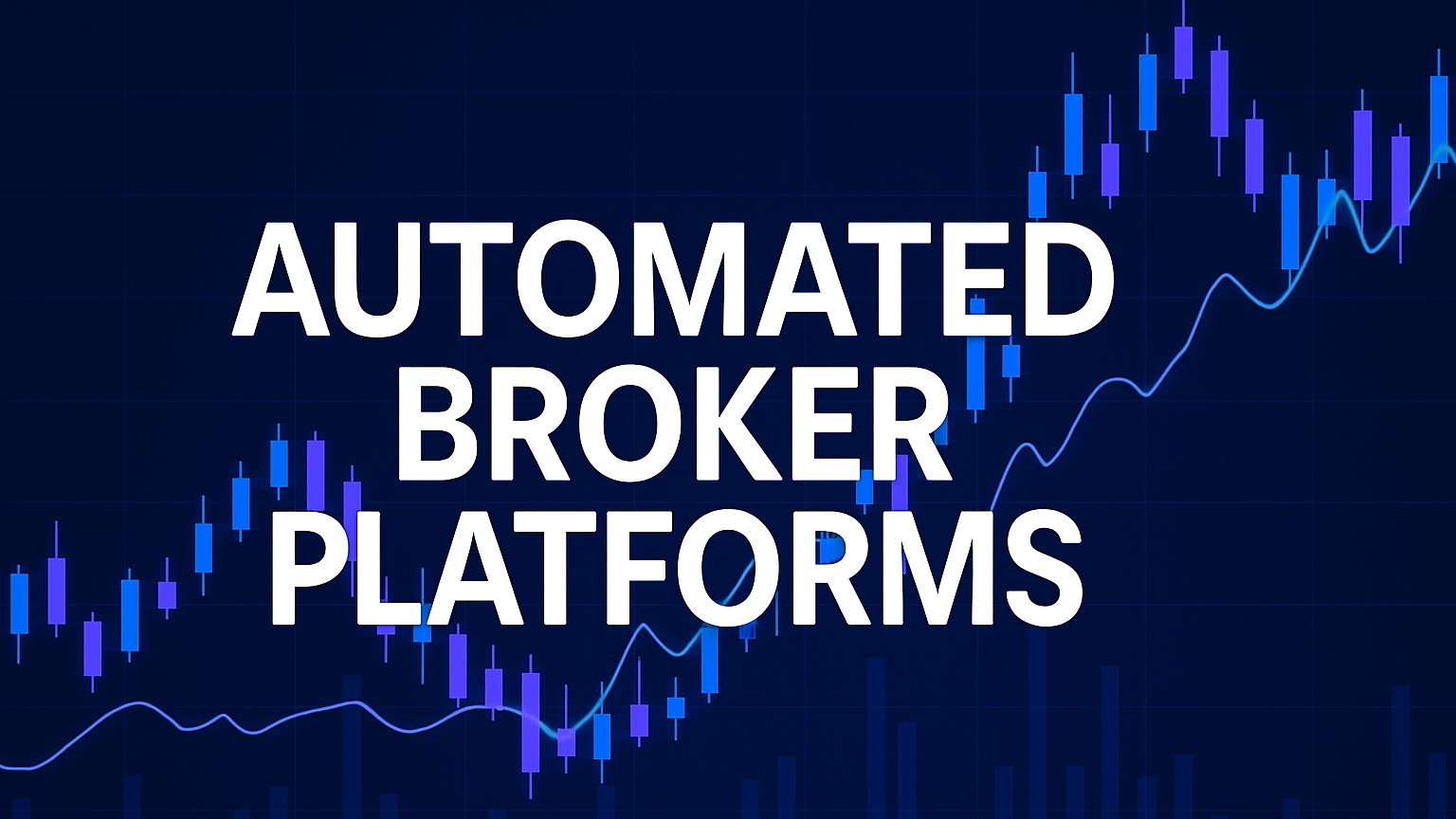Explore the top algorithmic trading strategies for 2025, integrating AI and machine learning for improved market performance and risk management.
Algorithmic trading dominates financial markets in 2025, handling up to 92 % of Forex transactions. With AI and machine learning driving automation, traders achieve faster execution, higher accuracy (70 % – 95 %), and 24 / 7 market coverage. Below are the top 10 algorithmic trading strategies reshaping the industry:
- LuxAlgo Trading Tools — Exclusive indicators (Price Action Concepts, Signals & Overlays, Oscillator Matrix) and an AI Backtesting Assistant that accelerate strategy creation and optimization.
- Moving-Average Crossover Algorithms — Trend-following systems that react when short- and long-term averages intersect, using adaptive stops and volume filters.
- Breakout Momentum Strategies — Automated detection of price escaping key support / resistance zones, confirmed by volume and volatility expansion.
- Mean-Reversion with Bollinger Bands — Reversion engines that fade extremes when price touches or compresses Bollinger Bands, adjusting to volatility.
- RSI-Driven Momentum Systems — Multi-time-frame scripts that adapt RSI thresholds dynamically for high-probability reversal or continuation trades.
- Neural-Network Price Forecasting — Hybrid LSTM / CNN models delivering up to 96 % directional accuracy on minute-level data.
- SVM Trend-Classification Models — Support-vector machines that label market regimes (bull, bear, sideways) in high-dimensional feature space.
- Statistical-Arbitrage (Pairs & Basket) — Cointegration-based engines exploiting temporary divergence between correlated assets.
- Low-Latency Market-Making Algorithms — Quote-driven models providing bid/ask liquidity in microseconds with FPGA hardware and co-location.
- Sentiment-Signal Trading — NLP pipelines that convert real-time social-media and news sentiment into long/short signals.
Quick Comparison
| Strategy | Key Algorithmic Edge | Ideal Use Case |
|---|---|---|
| LuxAlgo Tools | AI backtests, real-time indicators | Custom strategy creation |
| Moving-Average Crossover | Adaptive trend detection | Equity & FX trend following |
| Breakout Momentum | Volume-confirmed breakouts | Volatile sessions & news |
| Bollinger Mean-Reversion | Volatility-band fades | Range-bound markets |
| RSI Systems | Dynamic momentum thresholds | High-frequency rotations |
| Neural Networks | Deep-learning forecasts | Crypto, index futures |
| SVM Classification | Regime labeling | Feature-rich small datasets |
| Stat-Arb Pairs | Cointegration spreads | Correlated baskets |
| Market-Making | Microsecond quoting | Options & large-caps |
| Sentiment Trading | NLP sentiment scores | Retail-driven tickers |
Each strategy relies on systematic rules, comprehensive risk controls, and continuous data feeds to thrive in today’s automated landscape.
A Beginners Guide to LuxAlgo (2024)
LuxAlgo supplies exclusive indicators and an AI Backtesting platform on TradingView, trusted by more than 15 000 traders. Its offerings simplify and enhance technical analysis and strategy creation.
The Price Action Concepts (PAC) toolkit automates pattern detection and volumetric order-block analysis. The Signals & Overlays (S&O) toolkit delivers customizable signal algorithms, while the Oscillator Matrix (OSC) focuses on real-time divergence detection and money-flow insights.
Early 2025 additions include Market Performance by Yearly Seasons for seasonal return analysis and the Anchored Powered KAMA, refining Kaufman’s Adaptive Moving Average by filtering ranging trends. The built-in AI Backtesting Assistant lets traders test and optimize strategies across multiple assets and timeframes, compressing weeks of research into minutes.
"LuxAlgo lets me see the market faster and confirm entries and exits—it's amazing! The technical support and Discord community are excellent." – Çağrı Güler
Subscription Plans
| Plan | Price | Key Features |
|---|---|---|
| Free | $0 for life | Hundreds of free indicators in the LuxAlgo Library |
| Premium | $39.99 / month | Advanced signals, alerts, oscillator tools |
| Ultimate | $59.99 / month | Everything in Premium plus AI Backtesting Assistant |
Most beginners start with PAC, then integrate the AI Backtesting Assistant as confidence grows. A 30-day money-back guarantee makes exploration risk-free.
1. LuxAlgo Trading Tools
LuxAlgo’s ecosystem brings together exclusive toolkits and AI automation:
- PAC — Automates support / resistance, trendlines, and pattern recognition for quick market structure insights.
- S&O — Offers customizable signal modes (from conservative to hyper-scalping) and overlay indicators in a single pane.
- OSC — Detects divergences, Smart Money Flow shifts, and momentum exhaustion in real time.
- AI Backtesting Assistant — Conversational agent that spins up, ranks, and optimizes strategies across 6 million parameter combos.
With everything hosted on TradingView, integration is seamless for desktop, web, and mobile charts.
2. Moving-Average Crossover Algorithms
The Moving-Average Crossover Method remains a cornerstone of algorithmic trading, offering a structured way to detect trends and pinpoint entries and exits.
Key Components
- Simple crossover — Fast MA crosses slow MA for quick signals.
- Double crossover — Adds a medium MA for confirmation.
- Triple system — Uses short, medium, and long MAs for complex conditions.
Dynamic stop-losses via ATR, ADX trend filters, and volume confirmation help reduce whipsaws, while adaptive MA periods shift with volatility.
3. Breakout Momentum Strategies
Breakout algorithms monitor pivot highs/lows, volatility contractions, and volume spikes to catch explosive moves.
- Pivot detection pinpoints decisive levels.
- Volume surge (10 % + above 50-day MA) validates strength.
- Adaptive moving averages confirm follow-through.
Backtest results on gold ETFs show an average 0.86 % gain over 20 days, rising to 1.25 % with volume filters.
4. Mean-Reversion with Bollinger Bands
Bollinger Bands frame relative high and low zones. Algorithms fade extremes or trade squeezes when bands contract (low volatility) then expand (breakout potential).
| Band Element | Default | Typical Mod |
|---|---|---|
| Middle Band | 20-period SMA | 10–30 depending on trend length |
| Outer Bands | ±2 σ | ±1.5–2.5 σ for sensitivity |
Position sizing scales to band width, and stops trail dynamically to volatility.
5. RSI-Driven Momentum Systems
Adaptive RSI calculates oversold/overbought zones based on trend context (e.g., 40/80 in strong uptrends). Multi-time-frame checks (e.g., 5-min RSI agreement with 1-hr RSI) raise accuracy to 90 %+ in robust backtests.
- Shorter periods (5–7) for scalping.
- Longer periods (14–25) for intraday swing.
- Divergence detection highlights exhaustion before reversals.
6. Neural-Network Price Forecasting
Deep-learning models ingest OHLCV plus alternative data (social sentiment, on-chain metrics) to forecast next-bar direction. Hybrid LSTM + CNN structures push testing accuracy to 96 % on S&P 500 minis.
- Edge computing reduces inference latency 80 %.
- Adaptive learning updates weights intraday to reflect regime shifts.
7. SVM Trend-Classification Models
Support-vector machines classify bull, bear, or sideways conditions from dozens of engineered features (moving-average slope, volatility measures, order-flow imbalance). An RBF kernel captures non-linear relationships, maintaining precision even on smaller structured datasets.
8. Statistical-Arbitrage (Pairs & Basket)
Cointegration tests (Engle-Granger, Johansen) identify asset pairs likely to revert to equilibrium. Automated engines open long/short spreads when the z-score exceeds a threshold and exit once it mean-reverts.
- APIs (e.g., Alpaca, Interactive Brokers) stream tick data.
- Cloud servers run 24/7 monitoring with fail-safes.
9. Low-Latency Market-Making Algorithms
Quote engines post bid/ask liquidity and hedge inventory risk in microseconds. Infrastructure includes:
| Layer | Example |
|---|---|
| Network | Fiber + microwave links |
| Hardware | FPGAs for nanosecond tick-to-trade |
| Risk | Automated kill-switches, circuit breakers |
10. Sentiment-Signal Trading
Natural-language-processing pipelines scrape Twitter, Reddit, and news headlines. Vader/FinBERT models output sentiment scores that feed into execution rules (long positive spikes, short negative spikes). Diversified data sources and validation filters mitigate misinformation risk.
Conclusion
Automated systems now drive 70 % – 80 % of trades on U.S. exchanges. Combining high-quality data, thorough backtesting, and resilient infrastructure is essential for consistent performance.
Implementation Framework
| Component | Requirement | Tools |
|---|---|---|
| Data Quality | Clean, real-time feeds | LuxAlgo Library, premium providers |
| Strategy Testing | Backtest & forward test | AI Backtesting Assistant |
| Risk Management | Position sizing, SL/TP | Automated controls |
| Infrastructure | Low latency, redundancy | Cloud + dedicated servers |
Start small, diversify approaches, update models regularly, and keep contingency plans to safeguard capital while capturing algorithmic edge.








